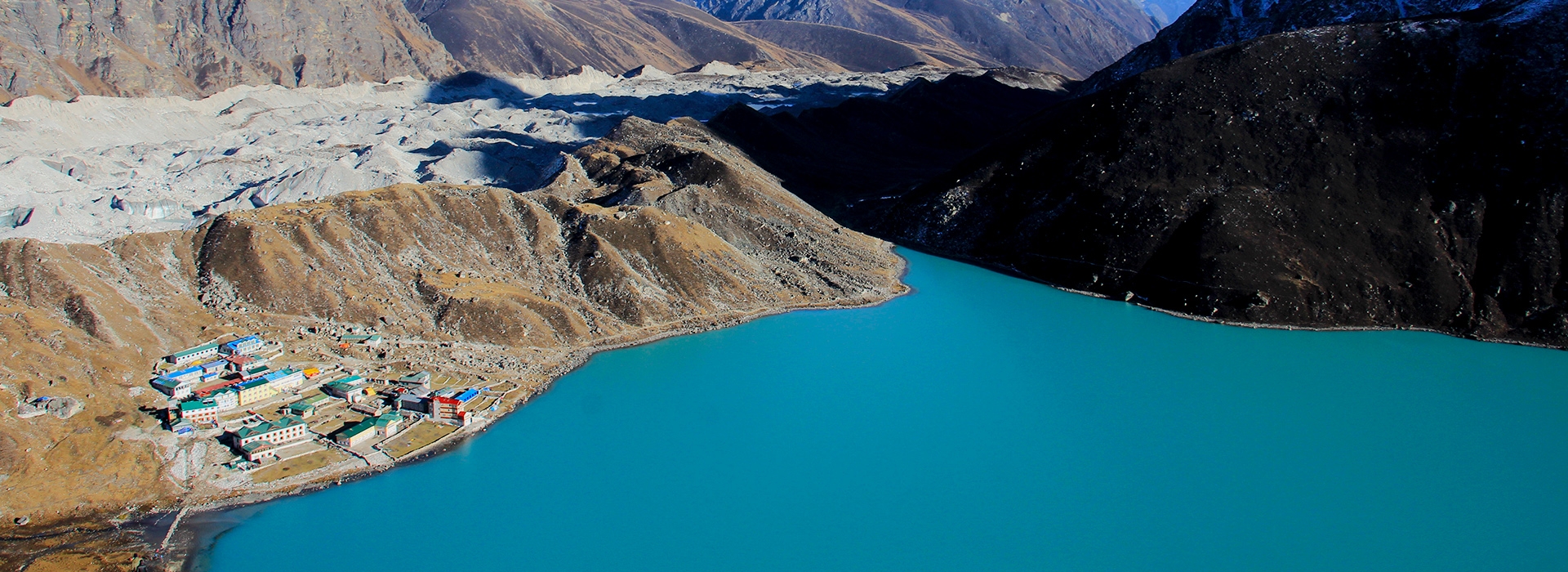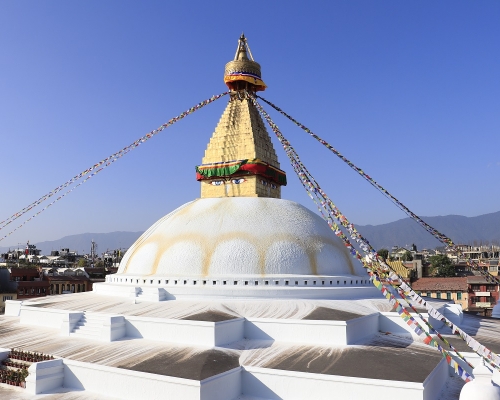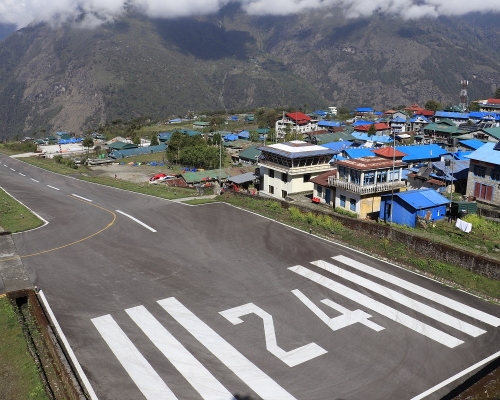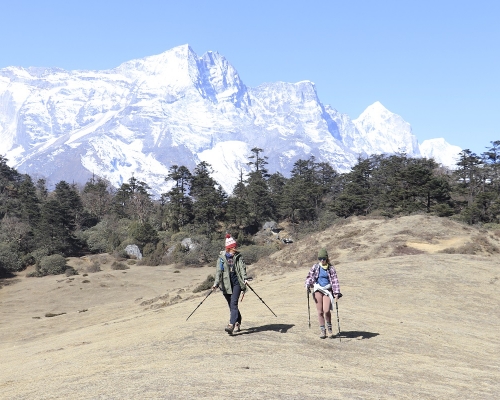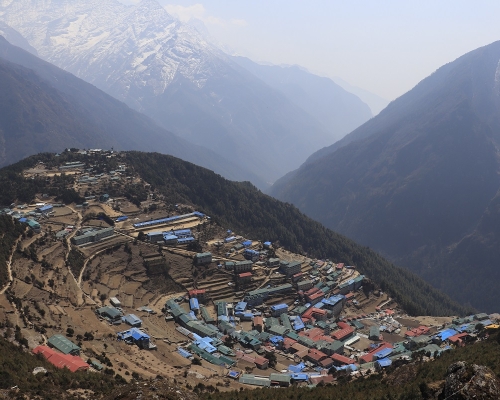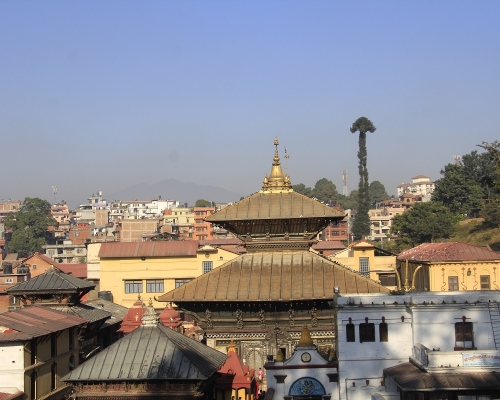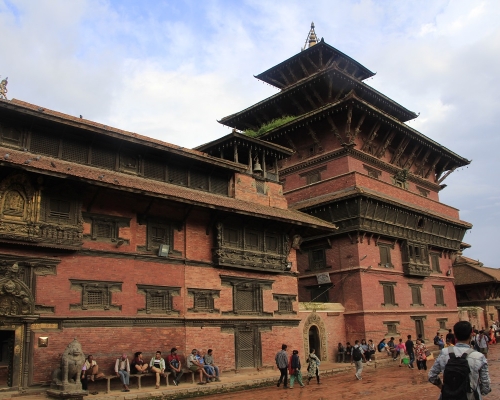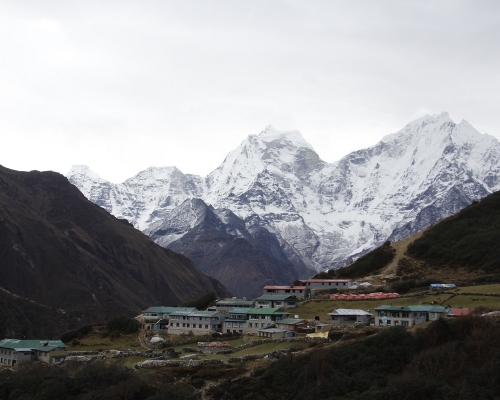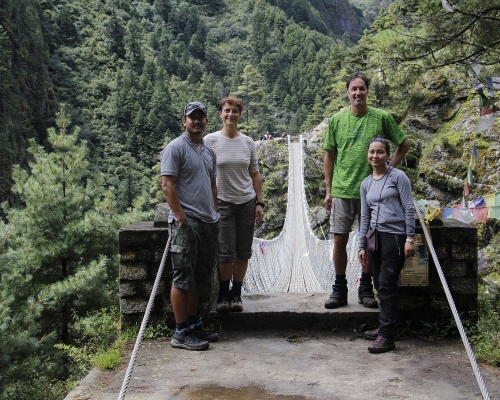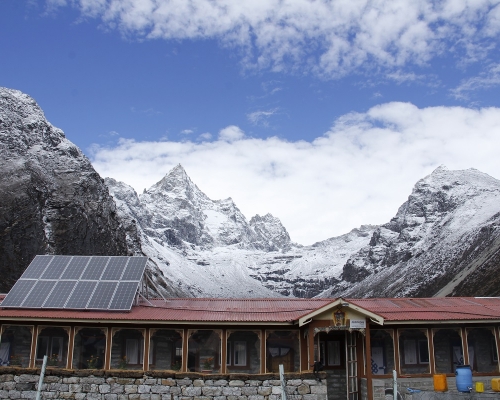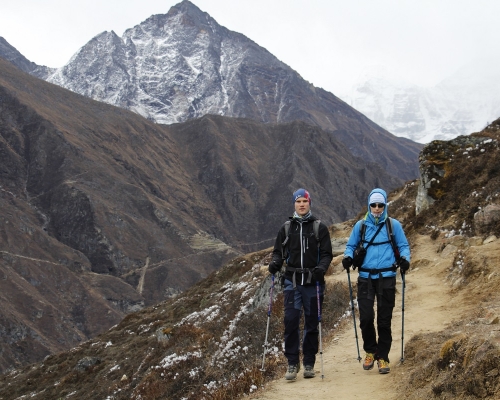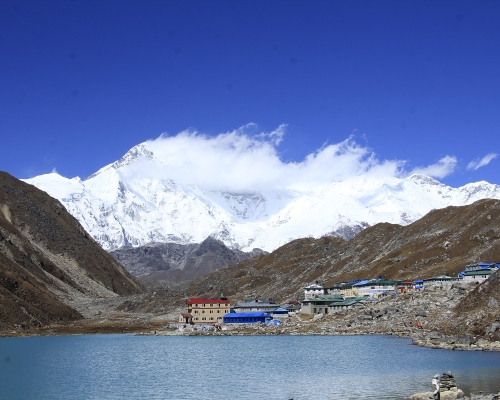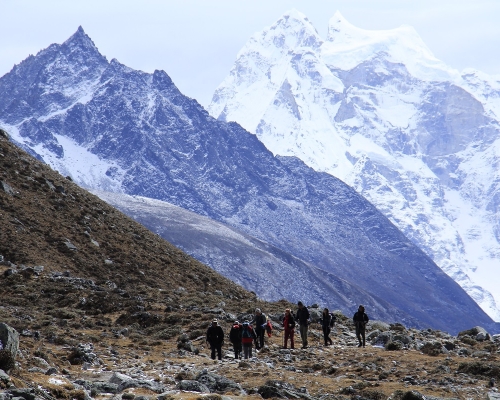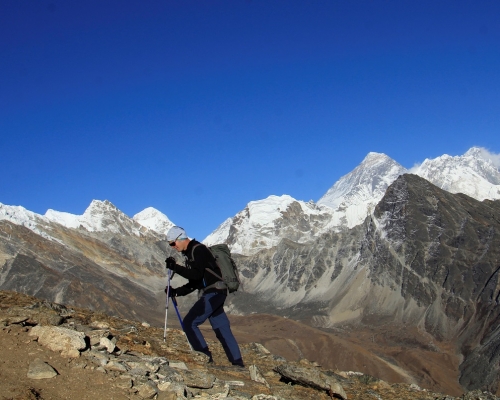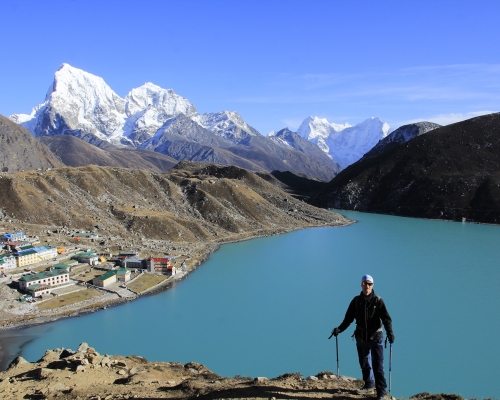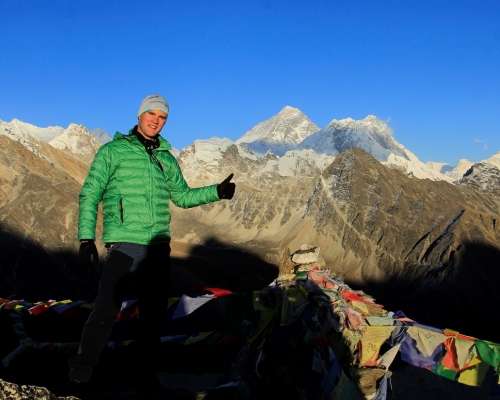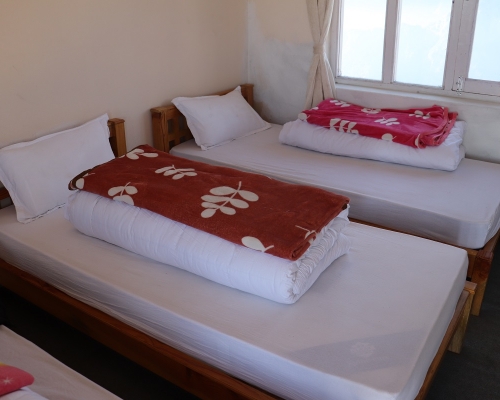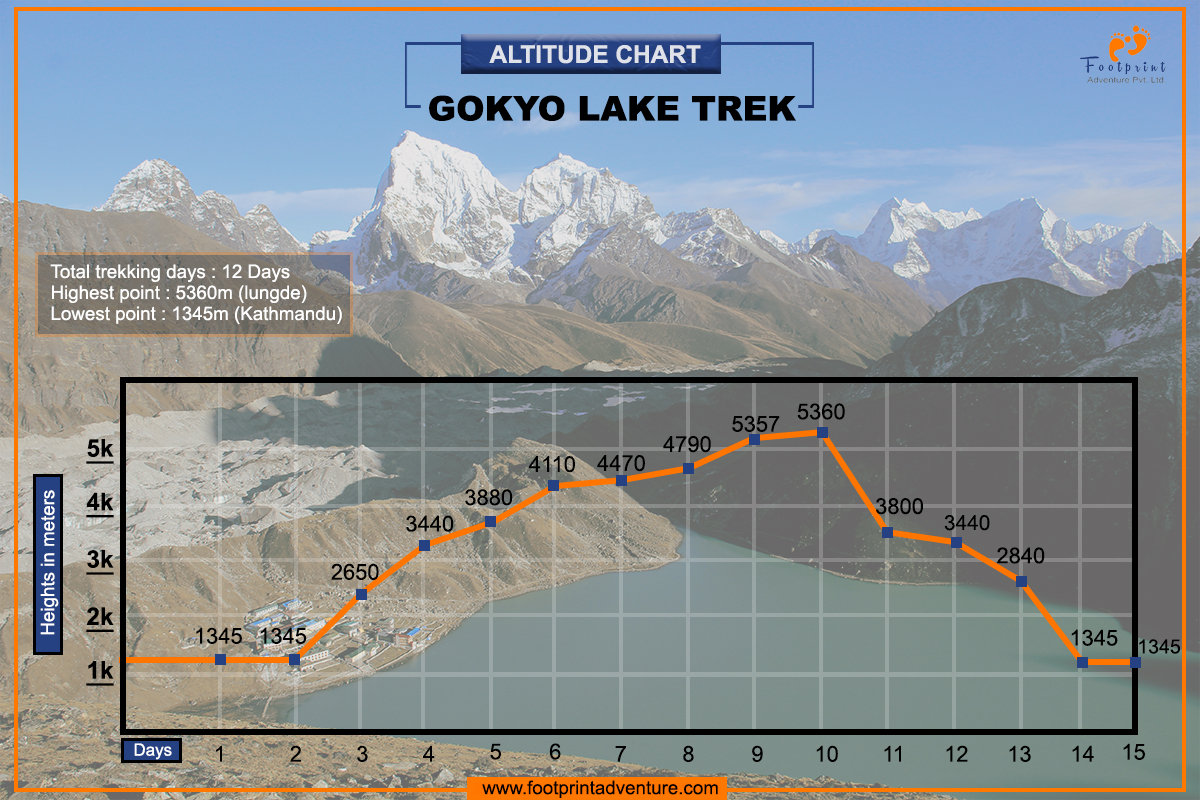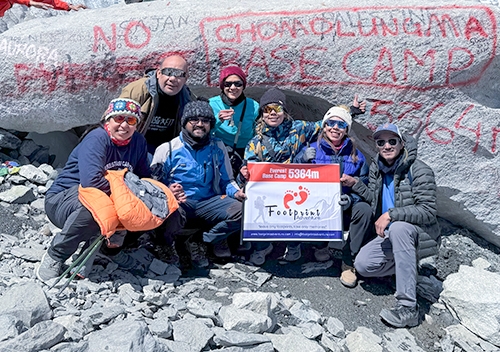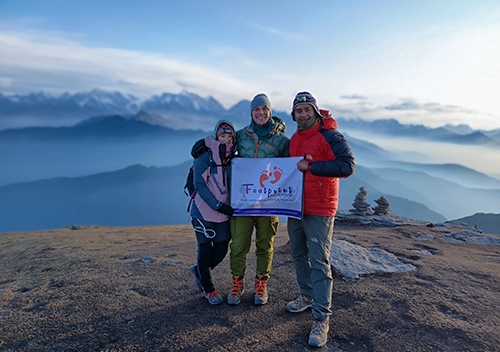Gokyo Lake and Renjo La Pass Trek is an incredible trip for exploring the soaring Himalayas in the Everest Region, lofty mountain glaciers, and glacial lakes; climbing to the top of mountain passes, particularly the Gokyo Ri (5,483 m); and then sneaking around the beautiful scenery of the majestic mountains, including Mt. Everest. It is known as an alternative route to Everest Base Camp, and you will be amazed and feel like you are in the paradise of Ice Land. You will also have the chance to see the beautiful village of the legendary Sherpas and learn about their different ways of life, rituals, and so on.
Gokyo and Renjo La Pass Trek begin with a flight from Kathmandu to Lukla. From Lukla, you'll walk to Namche via Phakding and the Sunkoshi River. You will rest in Namche Bazaar and tour the Sherpa village, where you can see Mt. Everest (8848 m), Lhotse (8,511 m), Nuptse (7,879 m), Amadablam (6,856 m), and Tawache (6542 m). The next day, you'll continue hiking to Dole via Khumjung town, reach Marchermo, and then enter Gokyo Valley. The next day, you'll go to Gokyo Ri (5,357 m) and see spectacular mountain vistas. After there, you'll trek back to Phortse, Pangboche, Namche, Phakding, Lukla, and Kathmandu. You will see the tall Himalayas and the beautiful villages of the famous Sherpas and learn about their different ways of life, customs, rituals, and unique and lively cultures. You can explore the Gokyo Lakeside in the Gokyo Valley, cross the high mountain pass, Gokyo Ri (5,483 m), and peek around the gorgeous mountains, including Mt. Everest. Trekking to Everest Gokyo is an unforgettable experience. You'll have stunning Himalayan vistas at every hill or mountain pass you traverse and feel great strolling along ice-filled slopes significantly above Gokyo Valley. You'll witness many glaciers and glacial lakes, such as Gokyo Lake, which has the world's tallest Himalayan mountains in the background.
Major highlights of Gokyo and Renjo La Pass Trek
Lukla Airport
The 35-minute flight from Kathmandu to Lukla is the fastest method to visit the Everest region. The airport's 527-meter-long, 30-meter-wide runway makes landings and takeoffs difficult, which is why the History Channel named Lukla Airport the most dangerous airport in 2010. The trip from Kathmandu to Lukla offers beautiful mountain panoramas. Indeed, it will be a scenic, world-class flight.
During the hiking season, this airport has over 60 flights per day, making it one of the busiest in Nepal. The plane to and from Lukla is small, so there are no set seats. Sit on the left while traveling to Lukla and on the right when flying to Kathmandu. It offers a spectacular view of Everest. The weather in Lukla fluctuates regularly, so flight cancellations are common.
Gokyo Lake and Ngozumxpa Glacier
The Gokyo Lake is the highest freshwater lake system in the world, at a maximum altitude of 5,357 m. Gokyo Lake is one of the most popular tourist attractions on the way to Everest Base Camp and other regions. At 4,790 m (15,720 ft) elevation, Gokyo village is one of the area's principal centers. Climbing Gokyo Ri is frequently included in trips to the region. And if you need more proof that this place is beautiful and essential, Footprint Adventure says, "The Gokyo Valley is, in our opinion, the most beautiful place in the Khumbu." Ngozumoa Glacier is another highlight of the Gokyo region. It is the longest glacier in the Himalayas, stretching 36 kilometers (22 miles) beneath Cho Oyu, the world's sixth-highest mountain.
Panoramic view of Mountains from Gokyo Ri
You can climb Gokyo Ri or Cho La Pass for breathtaking views of Mt. Everest (8,848 m), Mt. Lhotse (8,516 m), Mt. Cho Oyu (8,201 m), and Mt. Makalu (8,463 m), or continue north down the valley to the sacred lake's highest point. Mt. Changaste (7,550 m), Mt. Lingterin (6,679 m), Mt. Thamserku (6,723 m), Mt. Cholaste (6,335 m), etc. line up to the north. You'll have stunning Himalayan vistas at every hill or mountain pass you traverse, and you'll feel great strolling along ice-filled slopes, especially above Gokyo Valley.
Highlights of Gokyo Renjo La Pass Trek
- UNESCO World Heritage Site exploration such as Pashupatinath Temple, Swyambhunath Stupa, Boudhanath Stupa, and Patan Durbar Square.
- Scenic and dramatic flight from Kathmandu to Luka
- Hiking through the alpine forest of Sagarmatha National Park and exploring the life of rare flora and fauna.
- Acclimatization in the famous sherpa capital - Namche Bazaar.
- Organize cleaning campaigns in Namche Bazaar and spread awareness.
- Hike to the world's most renowned viewpoint, the Gokyo Ri viewpoint, and explore the 360-degree panoramic views of mountains.
- Breathtaking views of mountains, hills, and magical landscapes.
- Experience the culture and lifestyle of the Sherpa people.
- Cultural and farewell dinner in Kathmandu.
Best Time To Trek Gokyo Lakes
The months of spring (March-May) and fall (October–November) are the best times to trek to Gokyo Lake because the weather is more pleasant and ideal for high-altitude trekking. During these times of the year, you can see the mountains with no clouds in the way. Although it is possible to complete this hike during February and early September, the optimum time to complete the trek is during the months listed above.
Fitness for Gokyo and Renjo La Pass Trek
You need months to prepare for the Gokyo Lake Trek. To increase the effectiveness of your cardio workout, start with a brisk walk and go on to jogging. 5 km in 30 minutes should be your target. Start gradually and increase daily. Swimming, riding, and stair climbing help too. You must walk on uneven terrain while on the trek. Leg strength is a plus during this trek. Leg exercises like weightlifting and squats might help. You can complete this trek easily with the help of the classic Gokyo Lake Trek Map.
Gokyo Lake Trek Difficulty
Gokyo Lake Trek's difficulty varies by route. The mountain pass trek is difficult, but the Gokyo Lake Trek in Nepal is moderate. How hard it is to trek depends on how much altitude you gain per day, your highest point, the distance you travel each day, the terrain, and the weather. Gokyo Ri, which is the highest point along the Gokyo Lake trek route, is 5360 meters above sea level. This climb is moderate, so acclimatization is easy. The trail has some tough portions that are difficult for beginners. You must move carefully and steadily through these portions. Despite hurdles, the hike requires mental and physical preparation. Do not choose a trekking schedule that includes crossing mountain passes if you have no experience.
The Everest Gokyo Trek is amazing for its landscape and adventure. You can spend one or two days dining and drinking there if you wish. Ancient Buddhist monasteries, diverse flora and fauna, and whatnot have made the Gokyo Lake Trek worth doing. Footprint Adventure also provides personalized trekking trip itineraries. Read more about the complete guidebook for the Gokyo Lake Trek from our blog section and further information,contact us.

